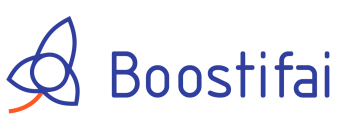Why Image Optimization is Important for SEO
Understanding the impact of images on search engine rankings
Understanding the impact of images on search engine rankings is crucial for effective search engine optimization (SEO). Images play a significant role in enhancing the user experience and attracting organic traffic to a website. Search engines not only analyze the textual content but also consider the relevance and quality of images when determining the ranking of a webpage. Optimizing images involves various factors such as using descriptive filenames, adding alt tags, compressing file sizes, and ensuring fast loading times. By following these image optimization techniques, website owners can improve their chances of higher search engine rankings and ultimately drive more targeted traffic to their site.
The role of image optimization in improving website performance
The role of image optimization in improving website performance is crucial for several reasons. Firstly, properly optimized images can significantly enhance the loading speed of a website. By reducing the file size of images without compromising their quality, the overall page load time can be reduced, leading to a better user experience and higher search engine rankings. Additionally, optimized images can also contribute to better SEO performance. Search engines consider factors such as alt tags, file names, and image descriptions when determining the relevance and quality of a webpage. Therefore, by optimizing images with relevant keywords and descriptive information, websites can improve their visibility in search engine results pages and attract more organic traffic. Overall, image optimization plays a vital role in improving website performance by enhancing loading speed, user experience, and search engine visibility.
How optimized images can enhance user experience
Optimizing images can greatly enhance the user experience on a website. When images are properly optimized, they load quickly, ensuring that visitors don't have to wait for a long time for the page to load. This not only improves user satisfaction but also reduces bounce rates, as users are more likely to stay on a website that loads quickly. Additionally, optimized images are often of higher quality and resolution, providing a visually appealing experience for users. By incorporating relevant keywords into image file names and alt tags, optimized images can also contribute to better search engine rankings, making it easier for users to discover and navigate to a website. Overall, optimizing images is a crucial aspect of website optimization, as it directly impacts the user experience and can lead to increased engagement and conversions.
Choosing the Right Image Format
Comparing popular image formats: JPEG, PNG, and GIF
When it comes to optimizing images for search engines, it is important to understand the differences between popular image formats such as JPEG, PNG, and GIF. Each format has its own strengths and weaknesses, making them suitable for different types of images. JPEG (Joint Photographic Experts Group) is commonly used for photographs and complex images as it supports millions of colors and offers a good balance between image quality and file size. PNG (Portable Network Graphics) is ideal for images with transparency or those that require high-quality graphics, but it tends to have larger file sizes. GIF (Graphics Interchange Format) is best for simple images and animations, with limited colors and smaller file sizes. By comparing these formats, you can choose the most appropriate one for your image optimization needs.
Understanding the pros and cons of each format
Understanding the pros and cons of each image format is crucial when optimizing your images for search engines. One popular format is JPEG, which is widely supported and provides good image quality with relatively small file sizes. However, it is a lossy format, meaning that some image data is discarded during compression, which can result in a slight loss of quality. Another format to consider is PNG, which supports transparency and provides higher image quality, especially for graphics and illustrations. However, PNG files tend to be larger in size, which can affect website loading speed. Additionally, there is the GIF format, which supports animation and has a small file size. However, it is limited in terms of color and image quality. By understanding the advantages and disadvantages of each format, you can make informed decisions on which format to use for your images, ensuring optimal search engine optimization.
Determining the best format based on image content and purpose
Determining the best format for your images is crucial when it comes to optimizing them for search engines. The choice of format should be based on the image content and its purpose on your website. For photographs or images with complex details and a wide range of colors, the JPEG format is often the most suitable option as it provides a good balance between image quality and file size. On the other hand, if your image contains simple graphics, logos, or text, the PNG format is recommended as it supports transparency and ensures crisp and sharp visuals. Additionally, for images that require animation or have a transparent background, the GIF format can be used. By carefully considering the image content and purpose, you can select the most appropriate format that will enhance your website's search engine optimization efforts.
Optimizing Image File Size
Using compression techniques to reduce file size
Using compression techniques is an essential step in optimizing your images for search engines. By reducing the file size of your images, you can improve the loading speed of your website, which is a crucial factor for search engine rankings. There are various compression techniques available that can help you achieve this. One popular method is using lossless compression, which reduces the file size without compromising the image quality. Another technique is using image optimization tools or plugins that automatically compress your images without requiring any manual intervention. By implementing these compression techniques, you can ensure that your images are search engine-friendly and contribute to a better user experience on your website.
The impact of large image files on website loading speed
The impact of large image files on website loading speed is significant. When a website contains high-resolution or uncompressed images, it can lead to slower loading times, which can negatively affect user experience. Large image files require more bandwidth to download, resulting in increased page load times. This can frustrate visitors and potentially drive them away from the site. Moreover, search engines take website loading speed into consideration when ranking search results. Therefore, optimizing images by compressing them without compromising quality is essential to ensure faster loading times and improve overall website performance.
Tools and plugins for efficient image compression
There are several tools and plugins available that can greatly assist in efficiently compressing images for optimal search engine optimization. One popular tool is Adobe Photoshop, which offers various options for image compression and optimization. Another useful plugin is Smush Image Compression and Optimization, which automatically compresses and optimizes images upon upload. Additionally, tools like TinyPNG and JPEGmini are widely used for their ability to reduce image file sizes without compromising quality. These tools and plugins can significantly improve website loading speed and enhance overall user experience, ultimately boosting search engine rankings.
Image Naming and Alt Text
The importance of descriptive file names for SEO
The importance of descriptive file names for SEO cannot be overstated. When it comes to optimizing your images for search engines, using descriptive file names is crucial. Search engines rely on file names to understand the content of an image and determine its relevance to a particular search query. By using descriptive file names that accurately describe the image, you are providing search engines with valuable information that can improve your chances of ranking higher in search results. Additionally, descriptive file names also make it easier for users to understand what the image is about before even clicking on it, enhancing the overall user experience. Therefore, it is essential to choose file names that are relevant, concise, and include keywords related to the image and its context.
Writing effective alt text for images
Writing effective alt text for images is crucial for optimizing your website for search engines. Alt text, also known as alternative text, is a description that is added to an image tag in HTML. It serves as a textual alternative to the image when it cannot be displayed or accessed by the user. When writing alt text, it is important to be descriptive and concise, accurately conveying the content and purpose of the image. Including relevant keywords in the alt text can also help improve the image's visibility in search engine results. By providing well-written alt text for your images, you enhance the accessibility of your website and increase the chances of your images being discovered by search engines.
Best practices for optimizing image filenames and alt text
When it comes to optimizing image filenames and alt text, there are a few best practices to keep in mind. Firstly, it is important to use descriptive and relevant filenames for your images. Instead of generic names like "image1.jpg," try to include keywords that accurately describe the content of the image. This not only helps search engines understand what the image is about but also improves the overall SEO of your website. Additionally, when writing alt text for your images, be sure to provide concise and meaningful descriptions that accurately represent the image. Alt text is crucial for accessibility purposes and can also contribute to better search engine rankings. By following these best practices, you can enhance the visibility and discoverability of your images in search engine results.
Utilizing Image Captions and Surrounding Text
The role of captions in providing context to images
The role of captions in providing context to images is crucial for enhancing the overall user experience and improving search engine optimization. Captions serve as a valuable tool to describe the content and purpose of an image, allowing search engines to better understand and index the image. By including relevant keywords in the captions, you can optimize your images for search engines and increase the likelihood of them appearing in relevant search results. Additionally, captions provide context to visually impaired users who rely on screen readers, enabling them to comprehend the image's meaning. Therefore, it is essential to craft informative and concise captions that accurately depict the image and its relevance to the surrounding content.
Optimizing captions for search engine visibility
Optimizing captions for search engine visibility is an essential aspect of image optimization. Captions provide valuable context to search engines, helping them understand the content of an image. When writing captions, it is important to include relevant keywords that accurately describe the image. This not only improves the visibility of the image in search engine results but also enhances the overall SEO (Search Engine Optimization) of the webpage. Additionally, captions should be concise, engaging, and informative, providing users with a clear understanding of the image's purpose. By optimizing captions for search engine visibility, website owners can increase their chances of attracting organic traffic and improving their website's ranking in search engine results pages.
Using relevant surrounding text to enhance image SEO
Using relevant surrounding text is an effective strategy to enhance image SEO. When including images on a webpage, it is important to provide descriptive and keyword-rich text around the image. This surrounding text helps search engines understand the context and relevance of the image. By incorporating relevant keywords and phrases, you can improve the chances of your image appearing in search engine results for related queries. Additionally, descriptive text can also make your webpage more accessible to visually impaired users who rely on screen readers. Therefore, by optimizing the surrounding text, you can not only improve your image's visibility in search engines but also enhance the overall user experience on your website.
Implementing Structured Data for Images
Understanding the concept of structured data
Understanding the concept of structured data is crucial for optimizing your images for search engines. Structured data refers to the organized format in which information is presented on a webpage, making it easier for search engines to understand and interpret the content. By incorporating structured data into your image optimization strategy, you can provide search engines with valuable information about your images, such as the image type, subject matter, and relevant keywords. This allows search engines to index and rank your images more accurately, increasing their visibility in search results and driving more organic traffic to your website. Additionally, structured data helps improve the user experience by enabling rich snippets and enhanced image displays in search engine results pages. Therefore, mastering the concept of structured data is essential for effectively optimizing your images and maximizing their impact on search engine rankings.
How structured data can improve image search results
How structured data can improve image search results Structured data plays a crucial role in enhancing image search results. By implementing structured data markup, search engines can better understand the content and context of images on a webpage. This allows search engines to display more relevant and accurate information about the images in search results, such as captions, descriptions, and even specific details like the location or date the image was taken. Structured data also enables search engines to index images more effectively, making them more discoverable to users. Overall, incorporating structured data into your website's images can significantly improve their visibility and increase the likelihood of attracting targeted organic traffic from image searches.
Adding structured data markup to images for better SEO
Adding structured data markup to images is an effective strategy for improving search engine optimization (SEO). By incorporating structured data markup, search engines can better understand the content and context of your images. This markup provides additional information such as the image's title, description, and relevant keywords, making it easier for search engines to index and rank your images. Furthermore, structured data markup can enhance the visibility of your images in search engine results pages (SERPs), increasing the likelihood of attracting organic traffic to your website. By implementing this technique, you can optimize your images for search engines and improve your overall SEO efforts.





